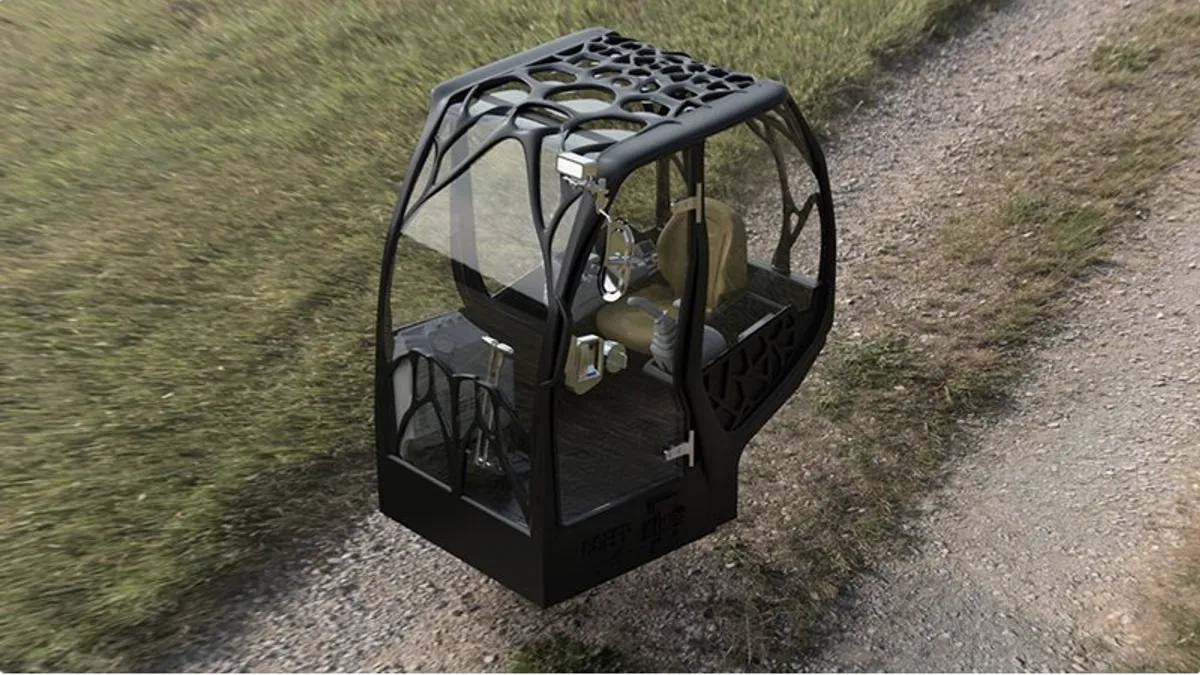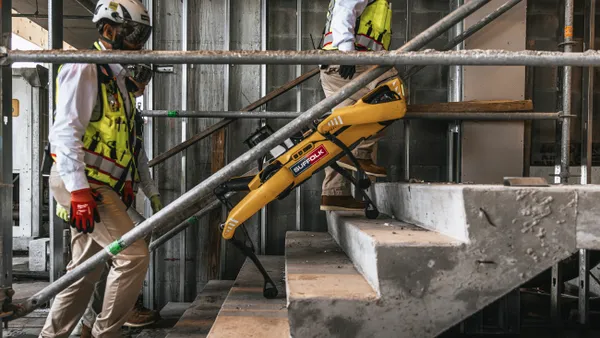Dive Brief:
-
The Oak Ridge National Laboratory has successfully completed a 3-D print job for an excavator cab, one of three components — including a heat exchanger and the hydraulic stick arm — to be assembled into a fully operational excavator.
-
Backed by the Department of Energy's Advanced Manufacturing Office, Project AME (Additive Manufacturing Excavator) will explore the use of light metal alloys including steel and aluminum as raw material for 3-D printing complex machinery.
- 3-D printing is quickly emerging as an additive manufacturing strategy suitable for the construction industry to create complex components on site and reduce dependence on equipment storage, transportation and supply logistics.
Dive Insight:
Although ORNL allows that 3-D printing faces construction limitations when it comes to high volume production building, there’s little doubt that the technology is taking off. A concrete 3-D printed house was unveiled in China last month, and a Dubai laboratory to research 3-D printing technologies will be 3-D printed and constructed onsite by local firm Convrgnt.
Onsite printing seems to be a key motivator for those pushing the limits with the technology, and it’s not all quite plug and play: The printers used in the residential build out in China were 60 feet wide and 20 feet tall. Through its excavator project, the lab is looking to accelerate hardware development by battle-testing a printer for large metal components and a concept laser printer that uses laser melting to print metal parts. The cab framework for the excavator has already been printed out of carbon-fiber reinforced ABS plastic.
ORNL is no stranger to the 3-D printing and vehicle mash-up. In September 2015, another additive manufacturing research team there unveiled a 3D-printed, off-the-grid building powered by (what else?) a 3-D printed vehicle.
Expanding into heavier equipment like excavators shows the promise of the technology for construction, not only in large equipment allocation and acquisition in remote and rugged environments, but also in creating and machining parts on-demand, and using 3-D technology to construct components out of metal.
ORNL plans to display its 3D-printed excavator at IFPE and CONEXPO-CON/AGG in March in Las Vegas, where the team is also planning to print a second excavator as part of a live demonstration of 3-D printing technology for the AEC sector.














